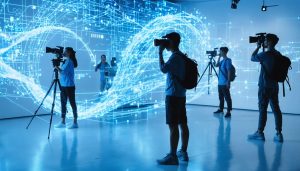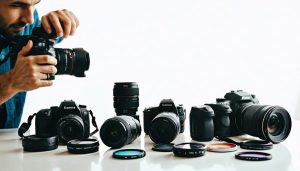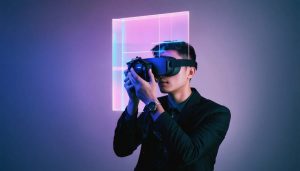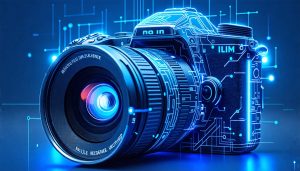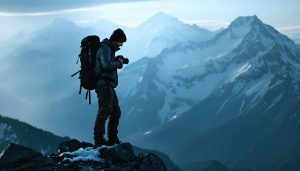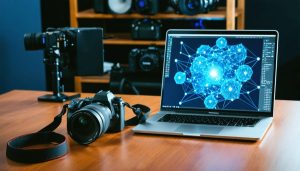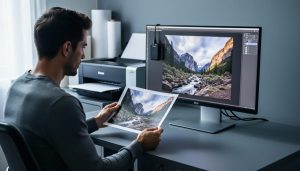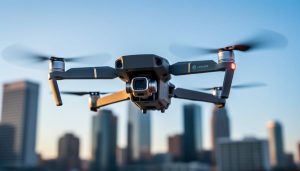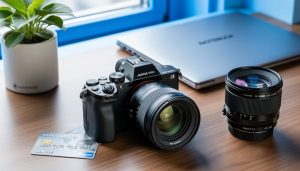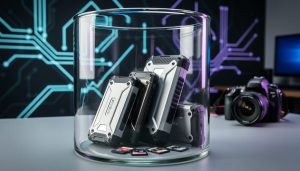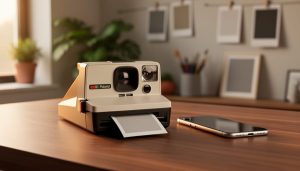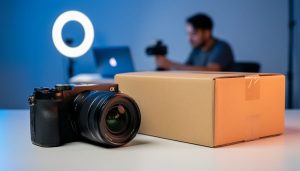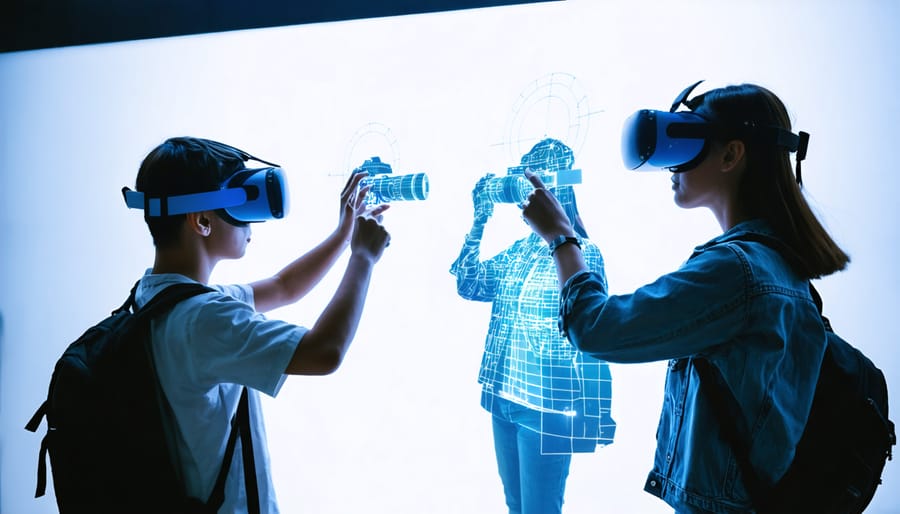
Step into a classroom where students dissect virtual human anatomy, explore ancient Roman ruins from their desks, and practice complex surgical procedures without risk. Augmented and virtual reality are revolutionizing education by transforming abstract concepts into tangible, interactive experiences that engage multiple senses and learning styles.
As photographers and visual storytellers, we’re uniquely positioned to understand the power of immersive experiences. Just as we use composition and light to create compelling narratives through our lenses, AR and VR technology enables educators to craft multi-dimensional learning environments that transcend traditional boundaries.
The impact is particularly striking in technical and creative fields, where spatial understanding and hands-on practice are crucial. Photography students can now explore camera mechanics through 3D models, practice composition in virtual galleries, and receive real-time feedback through AR overlays that guide their shooting techniques.
This fusion of physical and digital realms isn’t just enhancing how we teach—it’s fundamentally changing what’s possible in education. From medical training to art history, from engineering to environmental science, AR and VR are creating experiences that were once impossible, making complex subjects more accessible and engaging than ever before.
The future of education is here, and it’s wearing a headset.
AR/VR Photography Tools Transforming Education
Interactive Camera Simulators
Interactive camera simulators are revolutionizing how photography fundamentals are taught, offering students a risk-free environment to master complex camera operations. These virtual systems allow learners to experiment with camera settings, composition, and virtual reality photography techniques without the fear of damaging expensive equipment or wasting resources.
Modern simulators feature highly detailed 3D models of popular camera bodies, complete with accurate button layouts and menu systems. Students can manipulate virtual dials and settings while seeing real-time changes in exposure, depth of field, and other critical parameters. This immediate visual feedback helps reinforce the relationship between camera controls and their effects on the final image.
What makes these simulators particularly effective is their ability to recreate challenging shooting scenarios. Users can practice photographing fast-moving subjects, working in low-light conditions, or managing complex lighting setups – all from the comfort of their home or classroom. Many platforms also include guided tutorials that adapt to each student’s learning pace and comprehension level.
The integration of haptic feedback in some advanced simulators adds another dimension to the learning experience, allowing students to feel the resistance of focus rings and the click of adjustment dials, closely mimicking the tactile experience of handling a real camera. This physical connection helps develop muscle memory and operational confidence before working with actual equipment.
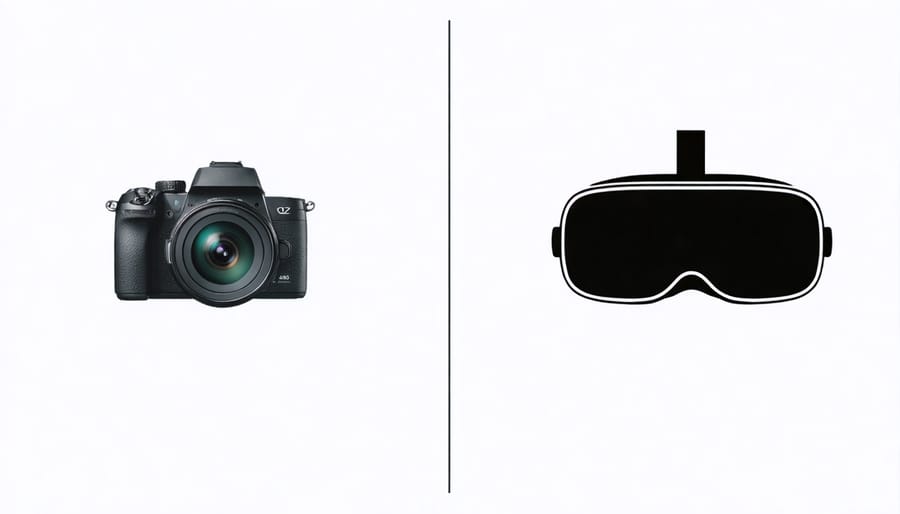
AR Composition Guides
Augmented reality has revolutionized how photographers learn and practice composition techniques, offering interactive guides that overlay directly onto the real world through smartphone screens or AR glasses. These tools project virtual gridlines, golden ratio overlays, and rule of thirds markers onto your actual scene, making it easier to understand and apply classic composition principles in real-time.
Popular AR composition apps now feature virtual tutors that analyze your frame and provide instant feedback on element placement, leading lines, and balance. For instance, when photographing landscapes, these guides can show you optimal horizon placement while suggesting foreground elements to enhance depth. In portrait photography, AR guides can highlight facial positioning and demonstrate how slight adjustments affect the overall composition.
What makes AR composition tools particularly valuable is their ability to simulate different focal lengths and aspect ratios before you take the shot. You can visualize how your composition would change with various lens choices, helping you make better equipment decisions in the field. Some advanced AR systems even incorporate AI to recognize scene elements and suggest alternative compositions based on successful photographs with similar subjects.
For photography educators, AR composition guides serve as powerful teaching tools, allowing students to see theoretical concepts applied in practical situations. The immediate visual feedback helps accelerate learning and retention, making complex composition principles more accessible to beginners while offering experienced photographers new perspectives on familiar scenes.
Real-World Applications in Photography Classes
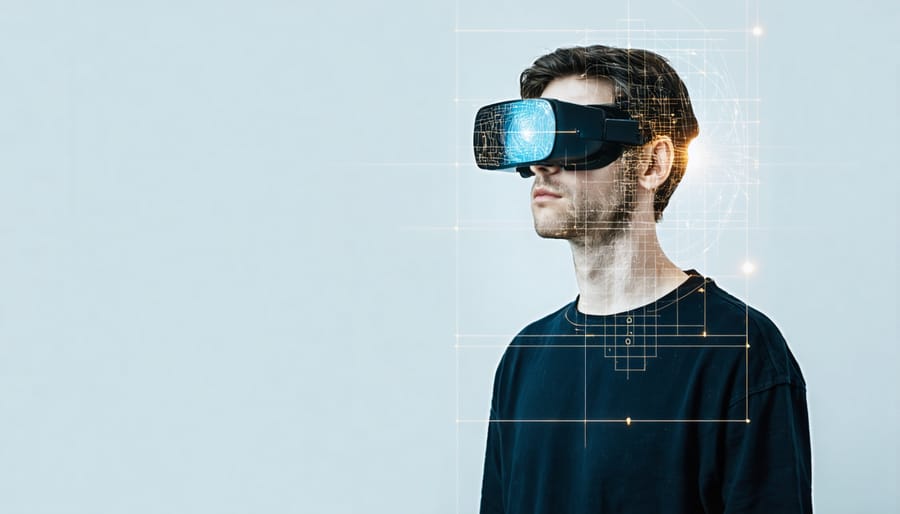
Virtual Photo Walks
Virtual photo walks represent a groundbreaking advancement in photography education, offering students and enthusiasts the ability to explore locations and practice composition techniques from anywhere in the world. Through immersive VR experiences, photographers can scout locations, study lighting conditions, and plan shoots without the physical constraints of travel.
Imagine walking through the narrow streets of Santorini at golden hour, analyzing how light interacts with the white-washed buildings, or exploring the dense forests of the Pacific Northwest to find the perfect composition for landscape photography. Virtual photo walks make this possible while providing real-time feedback on composition choices and exposure settings.
The technology offers particular value for location scouting, allowing photographers to:
– Assess natural lighting conditions at different times of day
– Identify potential shooting angles and vantage points
– Plan equipment needs based on terrain and shooting conditions
– Practice composition techniques in various environments
– Experiment with different focal lengths and perspectives
Students can benefit from guided virtual tours led by experienced photographers who can point out compositional elements, discuss technical considerations, and share insights about specific locations. This interactive learning experience helps develop an eye for composition while building confidence in different shooting scenarios.
For photography educators, virtual photo walks provide a consistent and controlled environment for teaching fundamental concepts, regardless of weather conditions or geographical limitations. Students can revisit locations multiple times, experimenting with different approaches and learning from their experiences without incurring travel costs or time constraints.
AR Lighting Demonstrations
Augmented reality has revolutionized the way photographers learn and visualize lighting setups, offering an interactive and immersive approach to understanding complex lighting scenarios. Through AR applications, students can now see virtual light sources, their positions, and their effects on subjects in real-time, all through their mobile devices or AR headsets.
Imagine being able to move virtual lights around a subject and instantly see how different positions affect shadows, highlights, and overall mood. AR demonstrations allow photographers to experiment with various lighting patterns – from basic setups like Rembrandt and butterfly lighting to more complex multi-light arrangements – without the need for physical equipment.
These AR tools typically overlay visual indicators showing light direction, intensity, and falloff patterns. Students can observe how adjusting the height, angle, or distance of a light source impacts the final image. Color temperature and light modifiers can be virtually applied, helping photographers understand their effects before investing in actual gear.
Many photography schools are now incorporating AR lighting simulators into their curriculum. These applications often include preset scenarios that demonstrate classic lighting techniques, while also allowing students to create and save their own lighting configurations. Some advanced AR systems even simulate different lighting conditions throughout the day, helping photographers master natural light photography.
The interactive nature of AR lighting demonstrations makes it easier for visual learners to grasp concepts that might be difficult to understand through traditional teaching methods. Students can practice and experiment freely, building confidence before working with actual lighting equipment, and develop a stronger intuitive understanding of light behavior in photography.
Creating Content for AR/VR Platforms
Equipment Requirements
To effectively implement AR and VR in educational photography settings, specific hardware and software requirements must be met. For AR applications, smart devices like tablets or smartphones with capable cameras and processors are essential starting points. Many modern devices support ARKit (iOS) or ARCore (Android), making them suitable for basic AR experiences.
For more immersive VR experiences, dedicated headsets are necessary. Entry-level options include the Meta Quest series or HP Reverb G2, which offer good balance between quality and accessibility for educational environments. These standalone devices are particularly useful for photography composition lessons and virtual gallery walks.
Camera equipment for 360-degree content creation typically includes specialized cameras like the Insta360 or GoPro Max. These tools are crucial for creating immersive virtual environments and teaching panoramic photography techniques.
Additional hardware requirements might include:
– High-performance computers for content development
– Motion controllers for interactive experiences
– External sensors for precise tracking
– Green screens for mixed reality content
– Storage solutions for large media files
For institutions implementing these technologies, it’s recommended to start with basic AR applications on existing devices before investing in more sophisticated VR equipment. This approach allows for gradual integration while managing budget constraints effectively.
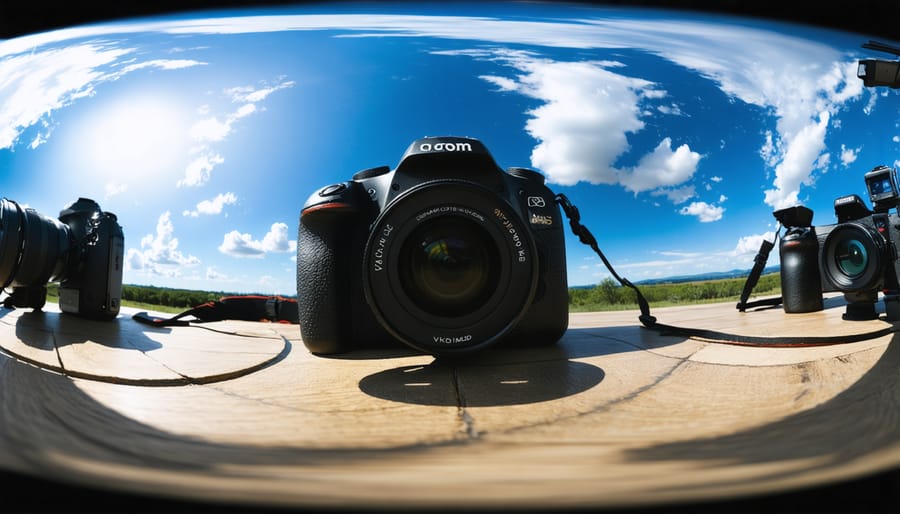
Technical Considerations
When capturing content for AR and VR applications in education, specific technical considerations are essential for optimal results. The camera setup typically requires higher resolution capabilities, with 4K being the minimum standard for immersive experiences. For 360-degree content, specialized cameras with multiple lenses are necessary to capture the complete environment without distortion or blind spots.
Lighting plays a crucial role in AR/VR photography. Even illumination is paramount, as shadows and harsh contrasts can interfere with tracking markers and diminish the overall experience. LED panels with adjustable color temperature are recommended for consistent, controllable lighting conditions.
For AR applications, maintaining proper contrast between tracking markers and their backgrounds is essential. The camera’s exposure settings should be carefully adjusted to ensure markers remain clearly visible while preserving detail in the surrounding environment. A faster shutter speed helps prevent motion blur, which can disrupt marker tracking.
When shooting VR content, stabilization becomes particularly important. Using a sturdy tripod or specialized gimbal system helps eliminate camera shake, which can cause discomfort for viewers in the virtual environment. The camera height should be set to average eye level (around 5.6 feet) to create a natural perspective.
Post-processing requirements include careful attention to stitching quality for 360-degree footage and maintaining consistent color grading across all viewpoints. File formats should be optimized for the specific AR/VR platform being used while balancing quality and file size for smooth performance.
Future Implications for Photography Education
As we look ahead, the integration of AR and VR in photography education promises to revolutionize how we teach and learn this craft. AR camera technology is already transforming traditional photography workflows, and this evolution will only accelerate in educational settings.
One of the most exciting developments on the horizon is the emergence of virtual photography studios where students can practice complex lighting setups and compositions without the need for physical equipment. Imagine being able to experiment with different lighting scenarios, adjust virtual modifiers, and see real-time results – all within a simulated environment that perfectly mirrors real-world conditions.
We’re also seeing the development of interactive learning experiences that allow students to “step inside” famous photographs, analyzing composition, lighting, and technical decisions from within the scene itself. This immersive approach to learning could help photographers better understand the creative process behind iconic images and develop their own artistic vision.
Remote learning capabilities will expand significantly, with virtual classrooms offering hands-on practice sessions regardless of geographical location. Students will be able to participate in virtual photo walks, receive real-time feedback from instructors, and collaborate with peers worldwide in shared virtual spaces.
The integration of AI with AR/VR systems will provide personalized learning paths, adapting to each student’s pace and style. Imagine having a virtual assistant that can analyze your shooting technique in real-time, offering suggestions for improvement and helping you master complex concepts more efficiently.
For photography educators, these technologies will offer new ways to demonstrate techniques, provide feedback, and assess student progress. Virtual portfolios will become more interactive, allowing students to showcase their work in immersive 3D galleries that viewers can explore from anywhere in the world.
As these technologies mature, we’ll likely see a blend of traditional and virtual learning methods, creating a more comprehensive and engaging educational experience for the next generation of photographers.
As we’ve explored throughout this article, augmented and virtual reality are revolutionizing photography education in ways previously unimaginable. These technologies aren’t just adding new dimensions to learning; they’re fundamentally transforming how we understand, practice, and master photography skills.
The impact is clear: students can now experiment with virtual camera settings in risk-free environments, visualize complex concepts like depth of field and exposure in real-time, and receive immediate feedback on their technique. This immersive approach to learning has shown remarkable results in student engagement and retention rates, with many photography schools reporting faster skill acquisition among students using AR/VR tools.
For photographers and educators looking to embrace these technologies, the path forward is increasingly accessible. Start by exploring basic AR apps on your smartphone for composition practice, then gradually move into more sophisticated VR platforms for comprehensive training. Many online photography courses now offer VR components, making it easier than ever to incorporate these tools into your learning journey.
The future of photography education lies at the intersection of traditional expertise and cutting-edge technology. Whether you’re a seasoned professional or just starting out, embracing AR/VR tools can significantly enhance your understanding and execution of photography techniques. As these technologies become more refined and accessible, they’ll continue to open new possibilities for creative expression and technical mastery in the field of photography.
Consider taking that first step today – your future self will thank you for embracing this educational revolution early.

